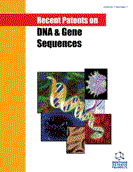Abstract
Viruses have evolved strategies to counteract host defenses. Some tactics employ viral proteins to neutralize host immune effector proteins such as cytokines, chemokines and their receptors, which help coordinate the host responses against the virus. Tumor necrosis factor (TNF) is one of the crucial pro-inflammatory/anti-viral cytokines involved in inflammatory and autoimmune diseases. Poxvirus anti-immune proteins represent some of the most complex and efficient mechanisms of regulating TNF and its pathological effects. These proteins have considerable potential for treating TNF-related diseases. Here we discuss two major classes of poxvirus-TNF inhibitors focusing on the tanapoxvirus (TPV)-2L protein, previously called TPV-gp38. TPV-2L has been shown to interact and biologically neutralize human (h)TNF, and has been indirectly associated with the inhibition of other cytokines (hIFN-γ, hIL-2 and hIL-5). The TPV-2L protein alone has been expressed, purified and shown to bind with high affinity to hTNF, but lacked binding to the other cytokines. Further studies identified sequential binding of hβ2-microglobulin and hα2-macroglobulin to TPV-2L. The ability of a single viral protein to form multi-protein complexes suggests that TPV might also possess other novel strategies of evading the immune system. Reviewed here are patented poxvirus TNF-binding proteins and their genes to evaluate their potential therapeutic value.
Keywords: Tumor necrosis factor, poxvirus, inflammation, cytokines, immune evasion, viroceptors, chemokines, viral gene, VIRAL CD30 PROTEIN, ALPHA2-MACROGLOBULIN, 2-MICROGLOBULIN, TGF- 1, Human TNFR, CD153 binding
 4
4











